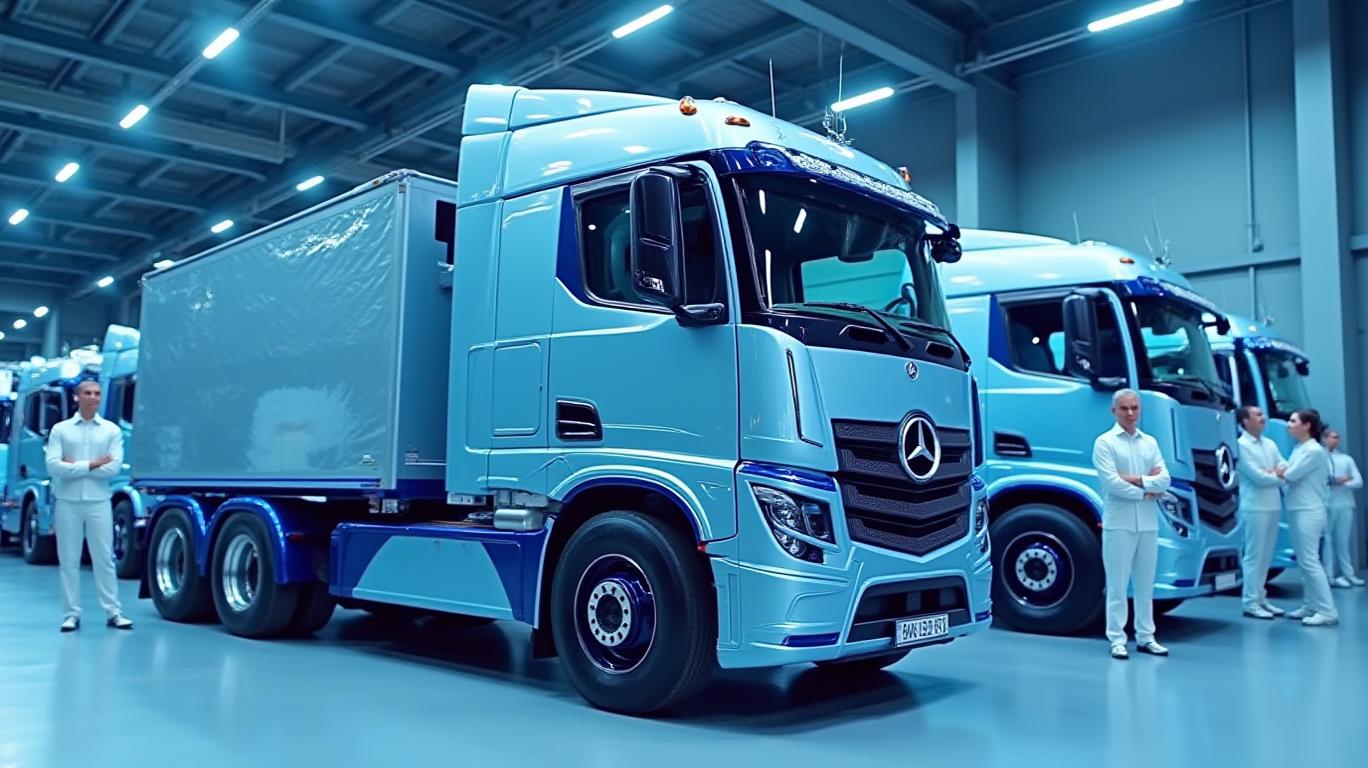Daimler Trucks: Margin Mastery in a Slowing World
In an automotive sector grappling with slowing demand, Daimler Truck AG (DTG) has emerged as a paragon of operational resilience. Despite reducing full-year sales guidance by 5-6%, the company’s Q1 2025 EBIT margin expansion to 9.6% and its North America segment’s 14.4% ROS outperformance underscore a disciplined strategy to protect profitability. This is no accident: Daimler’s blend of cost discipline, strategic restructuring, and electrification momentum positions it as a rare defensive play in a volatile industry.
The Margin Miracle: How Daimler Defied the Downturn
While global truck markets face headwinds—from U.S. macroeconomic uncertainty to Europe’s 15% medium/heavy-duty market contraction—Daimler’s profit margins have held firm. The North America segment’s 14.4% ROS is a standout achievement, driven by:
- Value-based pricing: Prioritizing higher-margin vocational and long-haul trucks over volume.
- Captive powertrain dominance: Detroit-brand engines and transmissions command premium pricing.
- Operational efficiency: Used-truck sales and lean manufacturing reduced unit costs.
Even as the U.S. Class 8 market shrank by 5%, Daimler’s focus on profitability over market share paid off. CFO Yves Scherger’s guidance—full-year Industrial Business ROS targets remain at 8-10%—suggests this is no flash in the pan.

Strategic Levers: Cost Cuts, Electrification, and Avoiding Layoffs
Daimler’s margin strength isn’t accidental. Three initiatives are key:
- Cost Down Europe Program:
- Targeting €1 billion in savings by 2030, with immediate moves like reducing vacation days and increasing temporary workers.
- No forced layoffs in Germany, thanks to a 10-year labor pact. This avoids union backlash while achieving flexibility.
Production reorganization could slash in-house costs and open lower-cost regions for manufacturing.
Electrification Traction:
- Amazon’s 202-unit e-Actros 600 order marks a milestone for long-haul EV adoption. With 1,266 ZEV orders in Q1 (vs. 813 deliveries), demand is outpacing supply, signaling future growth.
The “Truck Charge” initiative to build 3,000+ fast chargers by 2030 addresses infrastructure bottlenecks, a critical barrier to EV scaling.
Temporary Production Adjustments:
- Instead of permanent layoffs, Daimler is using shorter workweeks and staggered shifts to match demand. This preserves skilled labor and avoids the costs of rehiring during upturns.
Balance Sheet: A Fortress Amid Stormy Seas
With €7.9 billion in liquidity and a $36 billion market cap, Daimler’s financial health is a bulwark against sector volatility. Even as free cash flow dipped to €33 million (due to strategic investments), the company’s adjusted EBIT guidance (-5% to +5% vs. 2024) reflects confidence in cost controls. Analysts at RBC Capital Markets recently raised their price target to €47, implying 18% upside from current levels.
Why DTG Deserves a Seat in Your Portfolio
The case for Daimler isn’t just about margins—it’s about sustainable competitive advantage. While peers cut R&D or slash safety margins, Daimler is:
- Future-proofing its product line: The upcoming Actros L and e-Actros 600 represent generational upgrades.
- De-risking its workforce: The labor pact avoids costly disputes while adapting to automation.
- Monetizing scale: Its global footprint and captive powertrain division create cross-subsidies others can’t match.
Final Verdict: Buy DTG Now—Margin Discipline Meets Structural Shifts
Daimler’s Q1 results aren’t just a blip—they’re proof that margin resilience can thrive even in contraction. With a 9.6% EBIT margin in a weak quarter, €1 billion in cost savings on the horizon, and EV orders surging, this is a company engineered to outlast cycles. For investors seeking stability in a volatile sector, DTG’s combination of balance sheet strength, strategic foresight, and profit focus makes it a buy at current levels. The path to RBC’s €47 price target is clear—and the time to act is now.

Comments
No comments yet